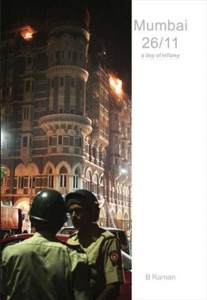It has developed and published guides on physical security against terrorism in sporting stadia and arenas, shopping centers and bars, pubs and clubs.
A Global Counter-Terrorism Strategy adopted by the UN General Assembly on September 8, 2006, laid down that any plan of action against terrorism should have the following four components:
- Measures to address conditions which could be conducive to the spread of terrorism.
- Measures to prevent and combat terrorism.
- Measures to build counter-terrorism capacities and to promote international co-operation.
- Measures to protect human rights and to enforce the rule of law.
Whereas other democracies such as those of the US, the UK and Israel have been facing only terrorism of one or two kinds, India has been facing terrorism of multiple origin with varied objectives and different areas of operation.
The Israeli Counter-Terrorism Strategy has three components “” defensive, operative and punitive.
Our intelligence agencies and security forces have been facing cross-border terrorism and hinterland terrorism; urban jihadi terrorism and rural Maoist terrorism; ideological terrorism, religious terrorism and ethnic or separatist terrorism; indigenous jihadi and pan-Islamic jihadi terrorism; and indigenous and Pakistan and Bangladesh sponsored terrorism. The likelihood of maritime terrorism and WMD threats from Al Qaeda based in Pakistan’s tribal belt and cyber terrorism from IT-literate terrorists have added to the complexity of the scenario.
Against this background, India’s counter-terrorism strategy has to have a common core with principles applicable to all terrorism and separate modules tailor-made and suited to the different kinds of terrorism that we have been facing.
The Police would be the weapon of first resort in dealing with hinterland terrorism of all kinds and the army would be the weapon of only last resort.
The principles of this common core, some of which are in force even now, are:
- The Police would be the weapon of first resort in dealing with hinterland terrorism of all kinds and the army would be the weapon of only last resort.
- In dealing with cross-border terrorism in J&K and with the ULFA and the tribal insurgents in the North-East, the Army would have the leadership role — with the police operating in the interior areas and the Army operating nearer the borders. The paramilitary forces would be available for assistance to the Police as well as the Army.
- Intelligence collection against hinterland terrorism would be the joint responsibility of the Intelligence Bureau (IB) and the State Police and in the border states of the IB, the Police and the Military intelligence. Intelligence collection regarding the external ramifications of all terrorist organizations would be the responsibility of the R&AW.
- Physical security against hinterland terrorism would be the joint responsibility of the State Police and the central security forces such as the Central Industrial Security Force (CISF). In the border areas, it will be the joint responsibility of the Army, the paramilitary forces and the Police.
- The new mutations of terrorism, which could strike India one day, such as WMD, maritime and cyber terrorism have to be dealt with jointly by the Armed Forces, the scientific community and the police — with the army having the leadership role in respect of WMD terrorism, the Navy/Coast Guard in respect of maritime terrorism and an appropriate S&T organization in respect of cyber terrorism.
- While dealing with jihadi terrorism calls for the strengthening of urban policing, dealing with Maoist terrorism cannot be effective without strengthening the rural policing.
| Editor’s Pick |
While we should follow a no-holds barred approach to crush terrorists from Pakistan and Bangladesh operating in our territory, our strategy in respect of our own nationals who have taken to terrorism should be nuanced with a mix of the political and security strands.
While we should avoid the pitfalls of over-militarization or Americanization of our counter-terrorism strategy, which would be counter-productive in our country with the second largest Muslim population in the world and with our location in the midst of the Islamic world, we should not hesitate to adopt with suitable modifications the best counter-terrorism practices from the US, the UK and Israel.
Our approach to terrorism has been more tactical than strategic, more influenced by short-term thinking than long-term projections.
Among practices worthy of emulation one could mention empowering the police with special laws, the creation of a central agency for co-ordinated investigation and prosecution of terrorism cases, strict immigration control, strong action to stop illegal immigration and to expel illegal immigrants, action to stop the flow of funds to the terrorists from any sources — internal and external — and the adoption of the concept of an integrated counter-terrorism staff for an integrated analysis of all terrorism-related intelligence and joint action on them. All agencies having counter-terrorism responsibilities should be represented in the staff.
The evolution of our counter-terrorism strategy has been in fits and starts as and when we faced a new kind of terrorism or faced a crisis situation. Similarly, our counter-terrorism community too has grown up in a haphazard manner. Our approach to terrorism has been more tactical than strategic, more influenced by short-term thinking than long-term projections. The time has come to set up a dedicated task force to recommend a comprehensive counter-terrorism strategy.
 The strategy has to be community-based to draw the support of all communities, political consensus-based to draw the support of all political parties and should provide for a close interaction with the private sector to benefit from its expertise and capabilities and to motivate it to protect itself in soft areas.
The strategy has to be community-based to draw the support of all communities, political consensus-based to draw the support of all political parties and should provide for a close interaction with the private sector to benefit from its expertise and capabilities and to motivate it to protect itself in soft areas.
To be continued…




